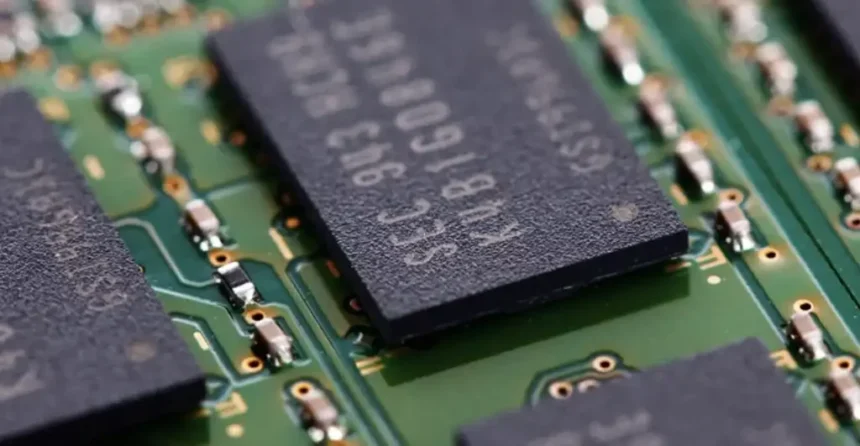In a world saturated with information, where every moment is a potential story and every interaction a new data point, what truly sticks?
What is the glue that binds our experiences, our knowledge, and our emotions into a coherent narrative we call “I”? It’s a question that has puzzled philosophers and scientists for millennia. The answer, in its most profound and simplest form, lies in a single, powerful word: memory.
Hello, dear readers, and welcome back to my corner of the internet. Today, we’re embarking on an incredible journey not across continents or into the latest tech gadget, but into the most complex and fascinating landscape known to humanity: the human brain.
Specifically, we’re going to pull back the curtain on the incredible, often-unseen process of how memory is made. You see, memory isn’t just a static filing cabinet where we store old photographs and phone numbers.
It’s a dynamic, living, breathing system that is constantly being built, shaped, and reshaped. It’s the very foundation of who we are our identity, our skills, our relationships, our hopes.
Understanding how it works isn’t just a matter of academic curiosity; it’s a key to unlocking our full potential, improving our learning, and enriching our lives. Before we dive deep, let’s address a common misconception. We often think of memory as a single entity.
In reality, it’s a multi-faceted, complex process involving several distinct stages and types. From the fleeting sensation of a scent that transports you back to childhood to the intricate details of a historical event you learned in school, every piece of information we retain has a different story of its creation.
The Three Pillars of Memory: Encoding, Storage, and Retrieval
To truly understand how memory is made, we must first break down its fundamental components. Think of it like a production line. The raw materials information come in, are processed, stored, and then later accessed.
The first and most critical step is encoding. This is the initial phase where our brains take new information and transform it into a neural code that can be stored. It’s like a translator converting a foreign language into one the brain can understand.
This process is happening all the time, often without us even realizing it. When you hear a song, read a sentence, or smell a flower, your brain is actively encoding that sensory input.
But here’s the critical part: not all encoding is created equal. The more deeply you process information during this stage, the more likely it is to stick. This is why cramming for an exam often fails in the long run.
You’re trying to shove information into your brain without giving it time to be properly processed and encoded. On the other hand, engaging with the material asking questions, connecting it to existing knowledge, and visualizing it creates a much stronger, more durable neural pathway.
A great practical tip to improve encoding is to try the “Elaborative Rehearsal” technique. Instead of just repeating information, try to understand its meaning and relate it to something you already know.
For example, if you’re learning about the historical significance of a battle, think about how it influenced subsequent events you’re familiar with.
Once information is encoded, it needs a place to live. This is the storage phase, where the encoded information is maintained over time. But again, it’s not a simple file-and-forget system. Our brain’s storage is a complex, dynamic library with different sections for different kinds of memory.
There’s the short-term memory, which is your brain’s temporary holding space. It can hold a small amount of information for a very brief period, usually about 20-30 seconds. Think of it as a mental notepad. When you look up a phone number and dial it, that information is in your short-term memory.
If you don’t actively work to move it, it’s gone. Then there’s long-term memory, where the magic happens. Long-term memory has a virtually limitless capacity and can hold information for an entire lifetime. But how does information move from short-term to long-term memory?
This is where the concept of “consolidation” comes in. This is a complex biological process that solidifies a memory into a stable, durable form, often involving the hippocampus and other brain regions. A good night’s sleep is critical for this process, as the brain works to consolidate memories while you rest.
Finally, there’s retrieval the process of accessing information from long-term storage and bringing it back to our conscious awareness. This is what we commonly refer to as “remembering.” Retrieval isn’t a passive act; it’s a reconstructive one.
Every time you recall a memory, you’re not just pulling a file. You’re actively rebuilding it, and in that process, you can subtly alter it. This is why eyewitness testimony can sometimes be unreliable. A powerful tip to improve retrieval is to practice it actively. This is also known as “retrieval practice” or the “testing effect.”
Instead of simply rereading your notes, try to recall the information from scratch. You can use flashcards, take a practice quiz, or simply try to explain a concept to a friend. This process strengthens the neural pathways and makes the memory more accessible in the future.
The Two Main Types of Long-Term Memory
Our long-term memory isn’t a monolith. It’s broadly divided into two major categories, each with its own purpose and mechanism. The first is explicit memory, also known as declarative memory. This is the memory of facts and events that we can consciously recall and “declare.”
It is further broken down into two subcategories. Episodic memory is your personal life story; it’s the memory of specific events you have experienced, like your first day of school, a family vacation, or what you had for dinner last night. It’s often associated with a particular time and place.
Semantic memory is your general knowledge of the world. It includes facts, concepts, and ideas. Knowing that Paris is the capital of France, understanding the concept of gravity, or recalling the lyrics to your favorite song are all examples of semantic memory.
The second major category is implicit memory, or non-declarative memory. This is the memory that operates unconsciously and influences our behavior without us being aware of it. It’s a powerful, often-hidden force in our lives.
A key example is procedural memory, which is the memory of how to do things. Think of riding a bicycle, typing on a keyboard, or playing a musical instrument. These are skills that you perform without consciously thinking about each step.
This type of memory is built through repetition and practice. For more on the power of habit, check out my recent post on “The Psychology of Habit Formation”.
The Biology of Memory: Where Do Memories Live?
So, if memory is a physical process, where in our brain does it all happen? The answer is not in a single location, but across a network of interconnected brain regions. The journey of a memory begins with the senses, and the information is processed in various areas of the brain before being consolidated.
The hippocampus is often called the brain’s “memory master.” It’s a small, seahorse-shaped structure deep in the brain that plays a critical role in forming new explicit memories.
It acts as a kind of relay station, processing and integrating new information before sending it to other parts of the cortex for long-term storage.
The amygdala, a small almond-shaped structure, is deeply involved in emotional memory. This is why a strong emotion whether positive or negative can make a memory so vivid and enduring.
For example, the memory of a traumatic event or a joyous celebration often has a powerful emotional component because the amygdala was highly active during its formation. The neocortex, the largest part of the brain, is the final destination for long-term memories.
Different parts of the neocortex store different types of memories. For instance, the visual cortex stores visual memories, and the auditory cortex stores auditory ones.
Why Do We Forget? The Flip Side of Memory
If making a memory is a complex process, so is losing one. Forgetting is not always a sign of a failing brain; in many ways, it’s a critical function that allows us to declutter our minds and prioritize what’s important. There are a few key theories that explain this phenomenon.
The decay theory suggests that if a memory is not used, it simply fades away over time, much like a path in a forest that becomes overgrown from lack of use. Then there’s the interference theory, which suggests that forgetting is caused by other memories getting in the way.
This can be either proactive interference, where old memories interfere with the ability to form new ones (like trying to remember a new phone number while an old one keeps popping into your head), or retroactive interference, where new information interferes with the ability to recall old information (like learning a new language and finding it hard to remember your native tongue).
Finally, there’s retrieval failure, where the memory is there, but you just can’t access it. This is often the case with the “tip-of-the-tongue” phenomenon.
Actionable Steps: How to Sharpen Your Memory Skills
Now that we understand the science, let’s turn to the art of improving our memory. This isn’t about magical pills or complex brain-hacking techniques. It’s about leveraging what we know about how the brain works to build stronger, more reliable memories.
Perhaps the single most important thing you can do for your memory is get a good night’s sleep. During sleep, the brain is not idle; it’s actively consolidating new memories, moving them from the temporary storage of the hippocampus to the long-term archives of the cortex.
For a deeper look into the power of rest, check out our article on “The Science of Sleep and Productivity”. Another crucial step is to practice mindful attention.
You can’t remember what you didn’t pay attention to in the first place. This may seem obvious, but in our distracted world, it’s a real challenge.
When you’re trying to learn something new or meet someone, be present. Put your phone away, make eye contact, and actively listen. This strengthens the initial encoding process.
Additionally, you should exercise your brain and body. Regular physical exercise is not just good for your body; it’s a boon for your brain. Exercise increases blood flow, reduces stress, and promotes the growth of new brain cells, particularly in the hippocampus.
Similarly, engaging in mentally stimulating activities like puzzles, learning a new language, or playing a musical instrument can build cognitive reserve and keep your brain nimble. Our brains also love stories and connections. When trying to remember a list of items, don’t just memorize them.
Create a vivid story that links each item together. Similarly, use mnemonics and acronyms to create shortcuts for your brain. The more hooks you can create for a memory, the easier it will be to retrieve. Finally, remember to revisit and rehearse.
The “forgetting curve” tells us that we forget most new information rapidly if we don’t revisit it. To combat this, use spaced repetition. Review new information a day after you learn it, then a few days later, and then a week later.
This repeated exposure at increasing intervals strengthens the memory and moves it deeper into long-term storage.
The Future of Memory: From Neuroscience to AI
The study of memory is one of the most exciting frontiers in neuroscience. Researchers are using advanced imaging techniques to watch memories being formed and retrieved in real-time.
We are on the cusp of understanding how specific neural circuits are activated during recall, which could lead to groundbreaking treatments for conditions like Alzheimer’s disease and PTSD. Furthermore, the rise of artificial intelligence is changing how we think about memory.
AI models learn and “remember” information in ways that mimic some aspects of the human brain, but they also have key differences. The collaboration between neuroscience and AI could one day lead to incredible advancements, from new ways to help people with memory disorders to more powerful and efficient learning tools.
Our Memory, Our Narrative
The journey to understand how memory is made is a journey into what it means to be human. Every memory whether it’s the taste of your grandmother’s apple pie, the excitement of a first kiss, or the knowledge of a complex scientific theory is a testament to the incredible power and complexity of our brains.
Our memories are not just a collection of events; they are the threads that weave the rich tapestry of our lives. They define our past, shape our present, and inform our future.
By understanding this miraculous process, we can not only become better learners and thinkers but also gain a deeper appreciation for the unique and intricate narrative that is our life.
So, the next time you find yourself recalling a cherished moment or learning a new skill, take a moment to marvel at the silent, sophisticated process unfolding within you. For in that silent process lies the very essence of who you are.







